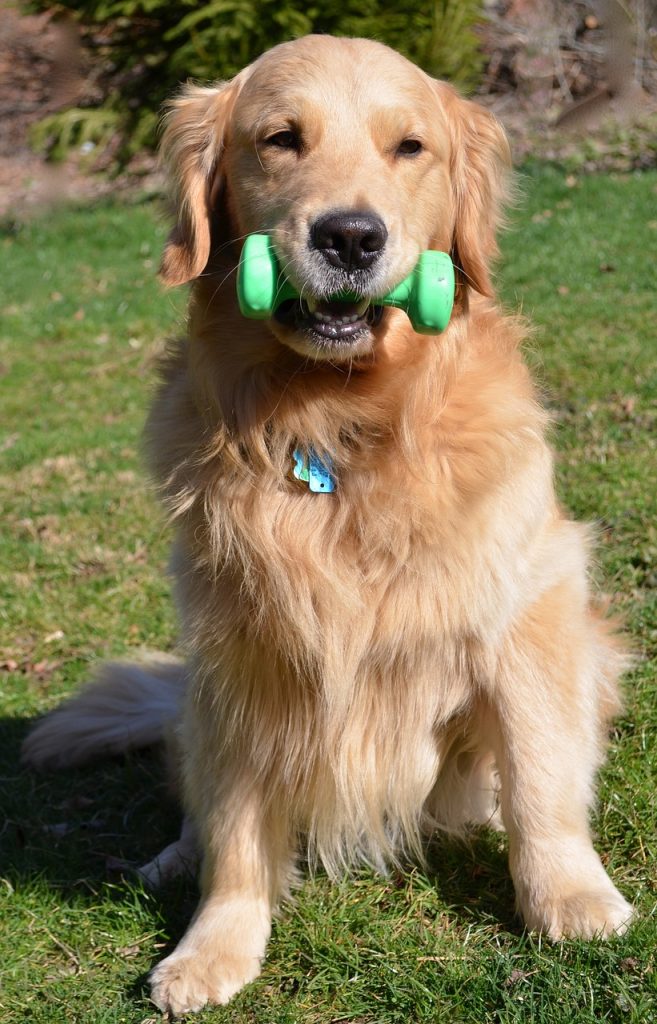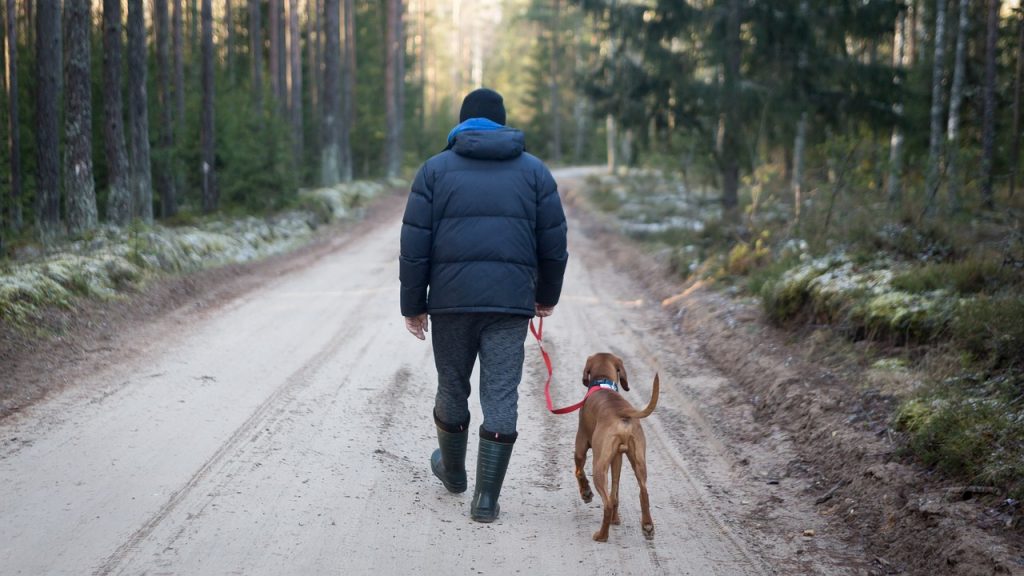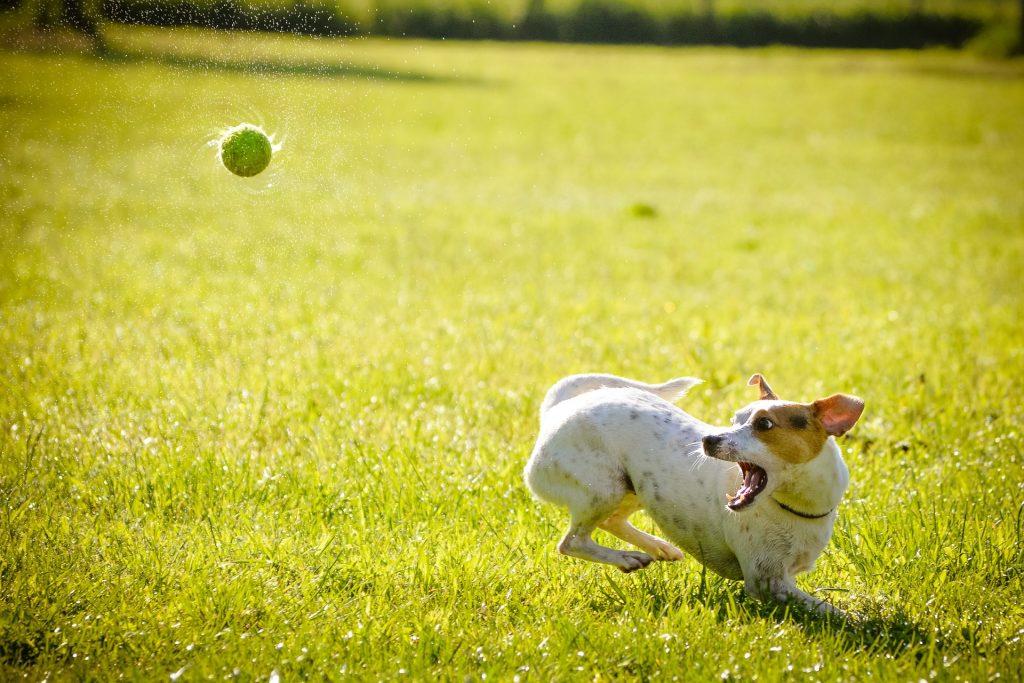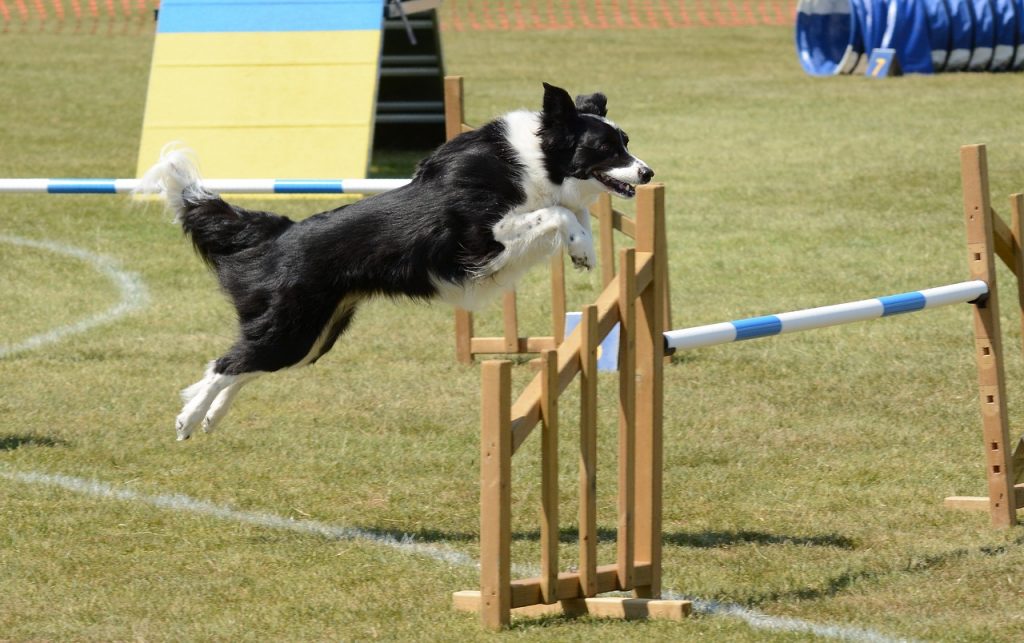If your dog has had a recent injury one of your main concerns may be how soon they can return to dog agility. The answer to this question is not always easy because each dog and each injury are unique. Returning too soon can increase their risk of re-injury, or developing a chronic problem that will lead to a longer recovery. Waiting too long, however, can lead to unnecessary deconditioning.
So what does a return to dog agility after an injury look like?
This article aims to walk you through the factors that make a complete rehabilitation program for return to sport possible. It does not cover specific exercises or time frames, as these will be dependent on the individual case.
The Injury
The injury may happen in an instant (acutely), or insidiously over time (degenerative). It may have been waiting to happen, and the event was insignificant, much like the straw that breaks the camels back.

First things first, you can’t change what’s happened. Accidents happen! If mistakes were made, you can learn from them, but you can’t turn back the clock. All you can do is move forward. There will be ups and downsduring the recovery, and it may take some time. First things first however, book an appointment with your Vet.
The Diagnosis
Your dog suffered an injury so it’s time to head to your vet. Your vet will perform a physical examination, and scans if they’re indicated. Based on the information at hand, they’ll formulate a diagnosis.
Other than fractures and bony injuries, most musculoskeletal injuries can be broken down into one of three grades according to severity:
- Grade 1: Muscle / tendon / ligament fibres stretched, no tears
- Grade 2: Some muscle / tendon / ligament fibres torn
- Grade 3: Complete tear of all muscle / tendon / ligament fibres
This information is important as it determines how long injuries take to heal. Grade one injuries may be a couple of weeks, whereas grade three injuries may be a 9-12 month recovery.
Once a diagnosis has been determined an appropriate treatment plan, with time frames, can be formulated.
If you’re lucky, you may have access to a rehab vet, sports medicine vet, or canine rehabilitation professional (CCRP / CCRT). These professionals tend to deal with the idiosyncrasies of musculoskeletal injuries on a much more frequent basis, and as such have further training in the area. They will also be more likely to have experience at returning dogs to agility, and can include a return to agility program.
The Treatment Plan
Before you can consider returning your dog to agility, the injury needs to be treated and rehabilitated appropriately. In worst case scenarios this may include surgery, but more often than not, if will include medications for pain relief and rest. Conservative therapies that can be beneficial during this time include:
- Manual Therapy
- Laser Therapy
- Acupuncture
- Exercise Rehabilitation

The goal in the first stage of treatment is to get your dog to be pain free during activities of daily living. This may take a few days, weeks, or several months.
Initially, activities may need to be restricted with some of the following advice given:
- Crate rest only with leashed toileting
- Progressive leashed walks
- No jumping / playing
- No off leash activities
Remember when you’re rehabbing an injury, the initial phases are all about limiting excessive movements and loading, and giving the tissues time to heal. So if you’re advised to limit your dog to leashed walks only, a 20 foot retractable lead defeats the purpose of what is trying to be achieved – controlled movement.
After the tissues have had the opportunity and time to heal, the next stage is the rehabilitation. This stage is all about progressive loading and reconditioning. Remember, the longer the rest period, the more deconditioning that has taken place. This is true both for the injury site and general conditioning, and is called the “use it or lose it” principle.
Beginning the Rehabilitation
A basic premise of any conditioning / rehabilitation program is progressive loading. There should be no lameness at any stage.
There are several factors to consider as part of the progression:
- Strength – the amount of load applied to the tissues. Also specific to range of motion.
- Endurance – how long the tissues can maintain that load. Both a factor of cardio respiratory endurance and muscular endurance
- Speed – how quickly a load can be applied
- Power – a combination of strength and speed. Power exercises are called plyometrics
Muscle Strength
Muscular strength is the amount of force that a muscle exerts against some form of resistance in a single effort. Strength is specific to particular movement planes, including their range of motion. Accessory muscles also work to stabilize during these movements and they are very important in a successful return to dog agility. An example of stabilizers include the rotator cuff muscles.
Strength can also be broken down into three sub-groups:
- Concentric – muscle fibres shorten under load
- Eccentric – muscle fibres lengthen under load
- Isometric – muscle fibres contract but are held at a constant length
In the case of dogs, once full range of motion and body weight have been achieved, progression in strength exercises is often achieved by reducing stability rather than increasing load.

Muscular Endurance
Endurance is about how long your dog can continue doing an activity at a given intensity. You may have heard of the aerobic and anaerobic energy systems? These are what dictates how long a given intensity can be maintained.
- Aerobic exercise is in the presence of oxygen, which means your body is able to use the available oxygen to provide energy.
- Anaerobic exercise is in the absence of oxygen, meaning your body uses stored energy and quickly available energy. Think sprints.
Endurance training should be progressive in nature, slowly building walking, and then running in a controlled environment. Free play and off leash should only be allowed once cleared for those specific activities.
Endurance training is an important part of a complete conditioning and return to agility program. This kind of training ensures your dog is able to perform over the course of a day and / or weekend.

Speed & Power
Speed is how quickly you can move from point A to point B. Power on the other hand is the ability to exert a maximal force in as short a time as possible, as in accelerating and jumping. There is an important distinction here as transitions in speed can become power exercises if they’re not controlled.
Power exercises (plyometrics) are the most advanced exercises as they require maximal strength, with the addition of speed. They are the last part of any complete training program before the actual return to sport / skill phase begins.
Take as an example returning your dog to running. You’ve been completing your daily walks and you decide, on leash to start increasing speed from a walk to a trot. The transition is controlled and safe. You can work on some speed, as well as endurance for running. If however, you decided to work on speed by throwing a ball and playing fetch. Yes, you’re working on speed, but is it controlled, no. Are you controlling the transitions, no. The explosive transitions are power exercises, and may be premature.
When adding speed exercises (such as running) you need to consider the transition zones. Are you asking for a very quick take off or stop, as in retrieving a ball? These exercises affect speed, but they are late stage exercises in a rehabilitation program.

Putting it all together
Having considered all of the individual parts, it’s now time to put it together. The first phase of a rehabilitation program starts with building strength.
Strength exercises should be performed in a controlled manner and through a full range of motion. They need to be progressive. Remember the “use it or lose it” principle? If you don’t stress the tissues they will not adapt.
In more severe injuries, if full range of motion or body weight cannot be achieved, it should be a goal. In this case the tissues may need to be de-loaded (e.g. using a help ’em up harness), and range of motion may need to be limited (e.g. using a small step to sit on during a sit to stand).
Once full range or motion and body weight have been achieved, strength exercises in dogs can be progressed by adding instability. This stresses the stabilizing muscles more.
Exercise complexity and endurance can then be progressed. Multiple planes of movement may occur in one exercise, different surfaces may be used, and / or duration of exercise can be extended. Speed is also something that can be considered at this point.
Finally power exercises (plyometrics) can be added. Initially exercises should occur in a single plane (e.g. straight jump), with plenty of rest between repetitions / sets.
The exercises (e.g. jumps) can then be chained together as a progression, before adding multiple planes of movement (e.g. jump on a turn). Quick transitions (acceleration and deceleration) can also be safely added at this point.
Below is an example of the progression of a single exercise. The sit to stand is an exercise for rear leg strengthening. It would be combined with other exercises in a complete rehabilitation program.
- Sit to stand (progress to full ROM, no lazy sit)
- Sit to stand on incline / step (front legs higher)
- Sit to stand with legs on balance pod (front legs then back legs)
- Sit to jump onto raised surface (start small and progress)
- Sit to jump over raised bar (start low and progress)
- Short sequences over bars in a straight line (start low and progress)
- Short sequences over bars with soft turns (start with only a single turn in the sequence)
- Longer sequences over bars in varying grids
Return to Agility
You should now be at a point where your dog can return to full agility training, with sequences and duration progressed until full runs, and then multiple runs can be achieved. There should be no lameness at any stage. It’s at this time that your dog is ready to be entered in their next agility trial.

Please note that this article is only to give you an idea of what it takes to design a rehabilitation program. It’s never meant to replace the advice given by your veterinarian.

